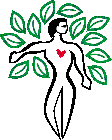
San Diego
Jewish Academy
High School Humanities
Patterns
|
|
San Diego
Jewish Academy |
Site Map | Quotes
| WordList | Glossary
| Graphic Organizers |
Rules of Thumb |
On-Line Resources |
WriteDesign | Co-Teachers - Doug
and Melissa | Gallery
E-Mail Doug at mrdoug@aznet.net
or Melissa at mjmckinstry@earthlink.net
Oh, by the way, it's much easier and much more fun when you work with others throughout the process." - Doug
Shape vocabulary - just as we develop a
vocabulary of words to make statements to express our thoughts, shape
vocabulary does the same thing through the use of, you guessed it,
shapes. On a more basic level words are made of letters or
characters. Similarly, shapes are comprised of smaller units of
points and lines.
Points and basic shapes - the example below shows basic shapes and simple orientations. Certainly, many more possibilities exist and as you develop your own shape vocabulary these possibilities will grow.
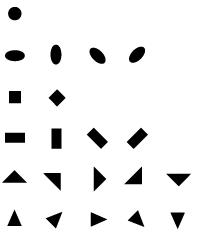
Lines - the thickness, length, and "shape" of the line affects its evocative qualities.

Combine points, lines, and larger shapes to create patterns. Keep in mind color also plays an important part in the pattern.
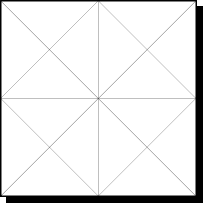
Create repeat patterns by dividing the shapes on the diagonals. Accuracy is critical.
Note: When cutting linoleum blocks:
The pattern below should not be tried on linoleum

Repeat the single block until you achieve the desired result.
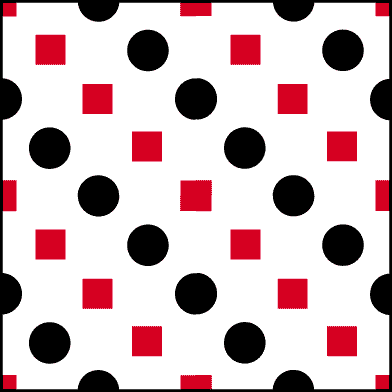 | Top
| Top
The Math Forum - Search for patterns.
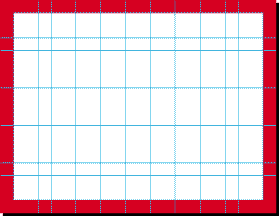
Symmetry of Rugs - About Symmetry and Pattern - http://forum.swarthmore.edu/geometry/rugs/symmetry/ - provides definitions and examples of symmetry and pattern, asymmetry and symmetry-breaking, the four basic symmetries, border patterns, field patterns, and grids and tessellations. This site does a great job of explaining how to create patterns.
Celtic Clip Art - http://www.webomator.com/bws/data/freeart/celtic/celtic_interlace.html - provides background information as well as images of panels, circles, backdrops, borders and more.
Tessellations - http://members.cox.net/tessellations/index.html - Tessellations offers educational products to teachers and others across the globe. Our goal is to provide unique items of the highest quality. Extensive instructions are always included, along with lesson material where appropriate.
|
|
Melissa and I would like to |